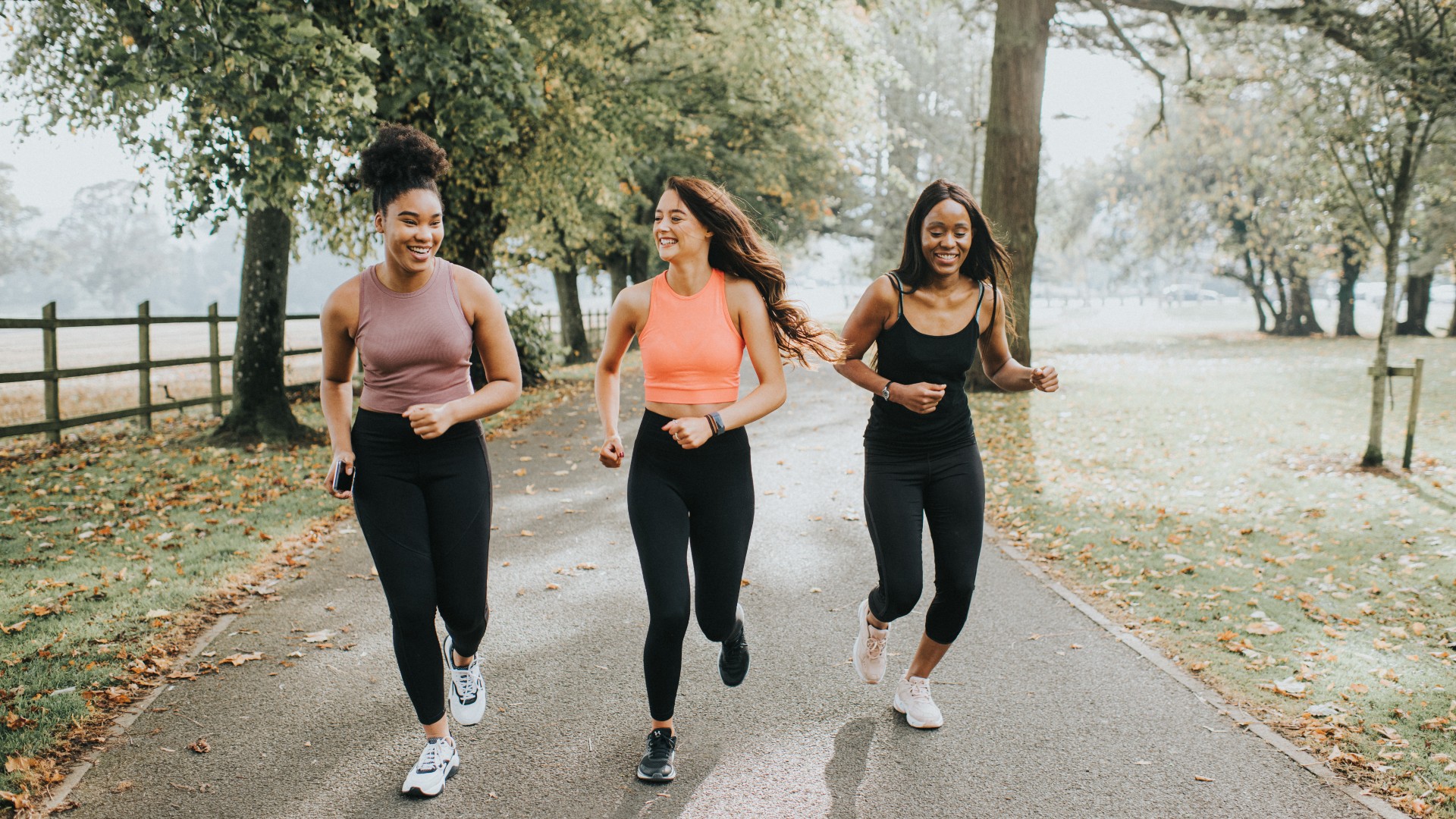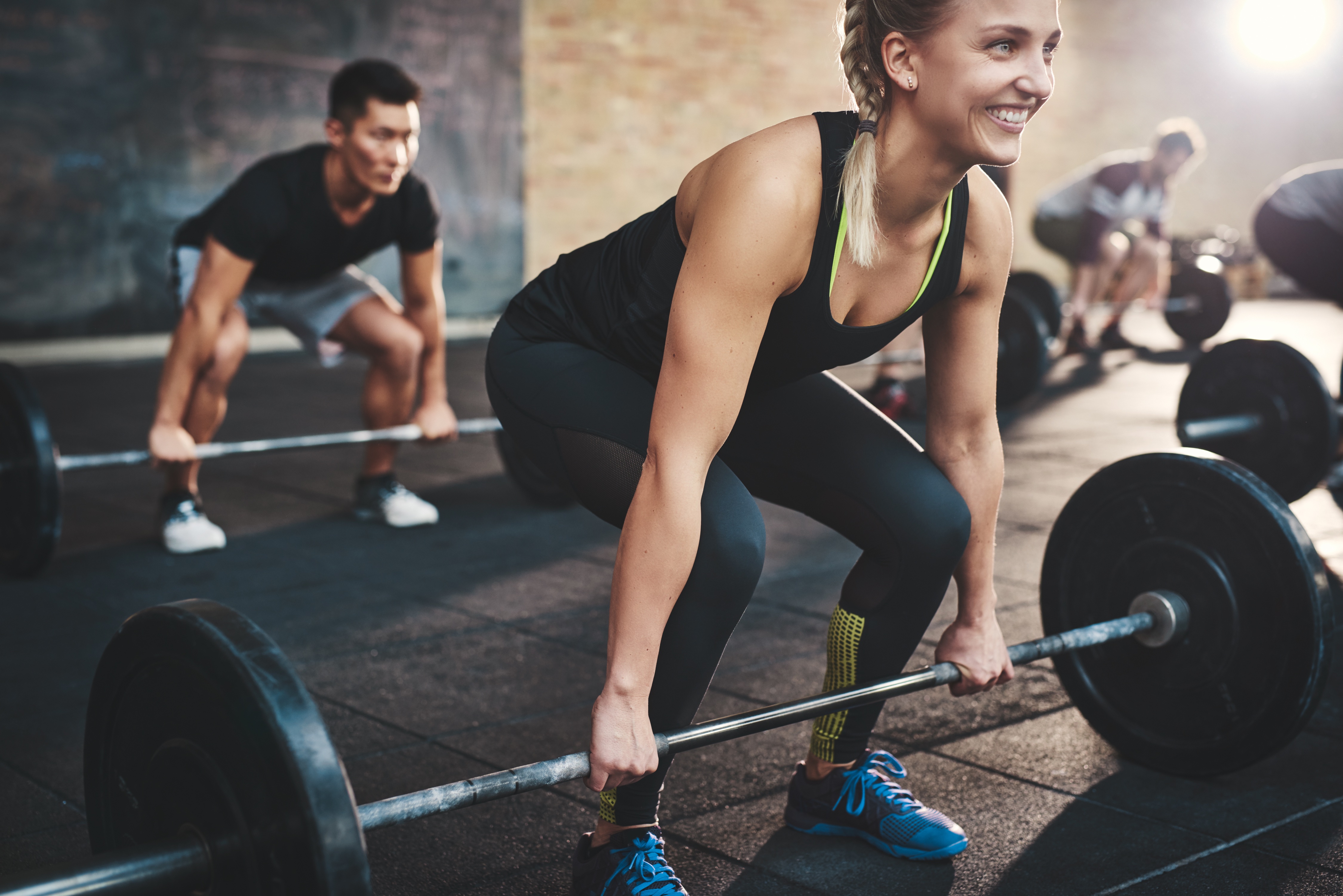
England's women’s football team — the Lionesses — recently changed their uniforms to dark blue shorts. Why? Because there’s an impractical nature to wearing white shorts during play. And the new design has a leak protection liner so players can focus on the game without worrying about their periods.
You don’t have to be a professional football player to share the same concerns. If you have a menstrual cycle, you might wonder whether you can work out during your period and whether it impacts exercise. We know exercising is beneficial for your mental and physical wellbeing — WHO guidelines recommend at least 150 minutes of moderate-vigorous aerobic activity per week — but how does that work during your period?
The menstrual cycle plays a vital role in women’s health, and women are affected to varying degrees, including how accessible exercise feels. But despite it easing some symptoms of periods, you might need to tweak your training plan. Below, we explain how to do it, some tell-tale signs your cycle is impacting your workouts, and how to hit back. And learn how to track your periods without using an app here.
Can you work out on your period?
Absolutely. Exercising through your period can ease negative symptoms associated with mood and pain. Regular exercise releases endorphins (a feel-good natural painkiller) and contributes toward better mental and physical health. But if you experience intense period symptoms, you might not feel like exercising.
Let’s face it — everyone experiences their period differently. Some women get little to no symptoms, while others can barely get out of bed. Exercise cycling means optimizing your training plan around when you’re likely to feel at your best and worst to maximize the benefits of your workouts. Besides, any movement is good.
Here’s our simple go-to guide for exercising for your menstrual cycle.
How to work out on your period

Remember to listen for your body’s signals and adjust your workout routine accordingly. Hormonal fluctuations affect energy levels, recovery, power output, and muscle performance, and you might also experience cramping, pain, mood swings, and nausea — ah, the joys!
Sign up to get the BEST of Tom's Guide direct to your inbox.
Get instant access to breaking news, the hottest reviews, great deals and helpful tips.
The best personal trainers and sports coaches now ask about their client’s menstrual cycles as standard practice when developing a training plan. It might seem a tad personal, but it’s the best way to ensure clients get the most back from exercise and could help avoid exercise injury, fatigue, and training plateaus. Whether you use a trainer or not, you’ll need to get to know your four menstrual cycle phases.
The 4 Menstrual cycle phases
Although the cycle phases remain the same, the experience differs. If you learn how to work with your cycle, it could become a superpower.
Menstrual phase
The menstrual phase starts on the first day of your period. You might notice low energy levels, cramping, irritability, and typical PMS symptoms. Estrogen and progesterone levels are also low, and you could feel more bloated or sensitive to pain. For some, low-intensity exercises like stretching, the best walking workouts, Pilates, and yoga could help.
A body of research suggests that fluctuations in female hormones during the menstrual cycle don’t seem to affect muscle contractile characteristics or VO2 max. Menstruating female athletes who compete in strength-specific sports and intense anaerobic and aerobic exercise may not need to adjust training during the menstrual phase to maximize performance. For those worse affected, it might be time to ease up.
If you feel energized, why not try this Hyrox workout we love.

2. Follicular phase
The follicular stage runs from the end of your period until ovulation. Hormones like estrogen levels rise, and mood, endurance, and energy ramp up. It’s usually the perfect time to engage in higher-intensity cardio like cycling or running and add resistance training back into the mix, especially as you reach ovulation. One study into follicular vs luteal phase-based strength training found higher increases in muscle strength in the follicular stage compared with luteal, so it could be a great time to hit those heavier weights.
If you're feeling strong, this Arnold Schwarzenegger workout builds full-body strength in just four moves.
3. Ovulatory phase
Ovulation typically occurs mid-cycle when estrogen levels peak. Most women feel great (Amen), experiencing high endurance and energy levels, and it’s an ideal time for anything you enjoy, including powerlifting and classes like CrossFit. However, limited data suggest tendon laxity also increases as progesterone levels rise, which could cause more knee injuries (this also applies during the mid-luteal phase).
Here are 5 cardio exercises that burn more calories than running, if you're feeling full of energy. Some are low-impact on your joints, too.
4. Luteal phase

As you move out of ovulation toward menstruation, the luteal phase begins. There’s a short drop in estrogen, and then estrogen and progesterone increase, peaking mid-luteal phase.
You might see the return of symptoms like low mood, cramps, bloating, and tiredness, and body temperature and pre-exercise heart rate are higher — a 2012 study into endurance capacity found pre-exercise heart rates were significantly higher in the luteal phase.
The same research into female hormone fluctuation (see above) suggests that endurance training can feel trickier in this phase due to higher cardio strain. In hot conditions, exercisers could fatigue quicker due to higher body temperature, which also occurs now. Female endurance athletes might prefer to adjust competition schedules to their menstrual cycle, especially in hot weather.
It could be time to add low-impact alternatives to your training regime. Feel-good activities like dancing or this boxing or shorter workouts of 15-20 minutes could be better options, alongside Pilates, stretching, walking, and light cardio. Recovering now could prime you for strength training goals when you feel stronger.
We recommend this 20-minute walking workout or a yoga for runners routine if you need gentle exercise ideas.
Which exercise is best during periods?
Everyone experiences their menstrual cycle differently, and some women have slightly short or longer cycles (by a few days), so tracking yours is the best way to stay on top.
If you feel fine, exercise as normal, but be aware of how your body feels. If you get hit with symptoms like lethargy and pain, dial it back and focus on low-impact exercise and recovery. And when you feel good (hitting the follicular phase), go for it.
What exercises should be avoided during periods?
Nothing is off-bounds, but many people feel rubbish trying to do endurance training or lift heavy weights during the luteal phase, and your heart rate and body temperature rise in this period. During this time, consider sticking to a lower tempo and recovery routine, doing only what feels good.
But despite PBs feeling out of reach, just remember those feelings will pass, and there are days when you’ll feel superhuman in the gym — bring on the follicular and ovulation phase!
More from Tom's Guide

Sam Hopes is a level 3 qualified trainer, level 2 reiki practitioner and senior fitness writer at Tom's Guide. She is also currently undertaking her Yoga For Athletes training course. Sam has written for various fitness brands and websites over the years and has experience across brands at Future such as Live Science, Fit&Well, Coach, and T3.
Having worked with fitness studios like F45 and Virgin Active, Sam now primarily teaches outdoor bootcamps, bodyweight, calisthenics and kettlebells. She also coaches mobility and stretching-focused classes several times a week and believes that true strength comes from a holistic approach to training your body.
Sam has completed two mixed doubles Hyrox competitions in London and the Netherlands and finished her first doubles attempt in 1:11.
